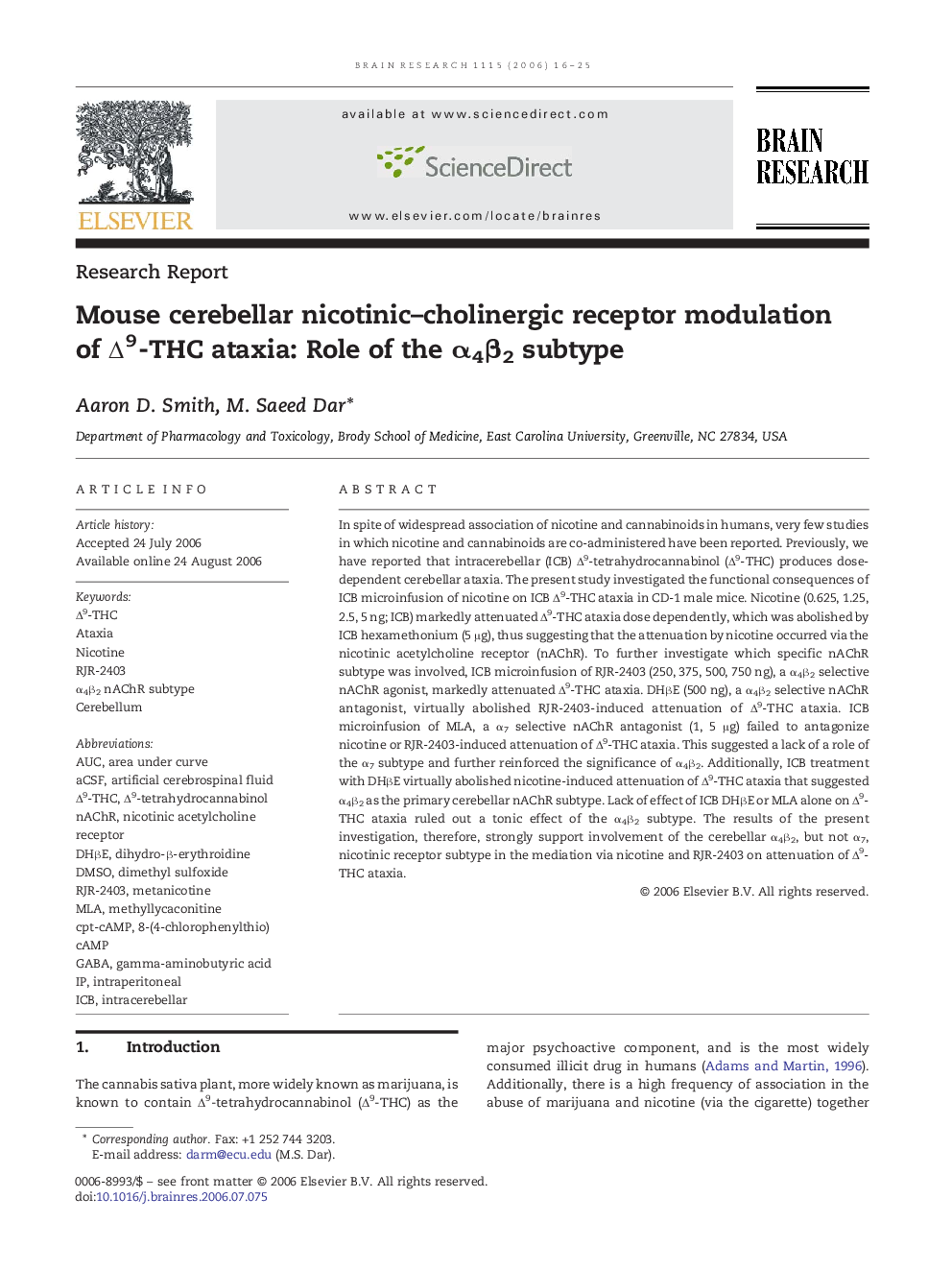| Article ID | Journal | Published Year | Pages | File Type |
|---|---|---|---|---|
| 4332284 | Brain Research | 2006 | 10 Pages |
In spite of widespread association of nicotine and cannabinoids in humans, very few studies in which nicotine and cannabinoids are co-administered have been reported. Previously, we have reported that intracerebellar (ICB) Δ9-tetrahydrocannabinol (Δ9-THC) produces dose-dependent cerebellar ataxia. The present study investigated the functional consequences of ICB microinfusion of nicotine on ICB Δ9-THC ataxia in CD-1 male mice. Nicotine (0.625, 1.25, 2.5, 5 ng; ICB) markedly attenuated Δ9-THC ataxia dose dependently, which was abolished by ICB hexamethonium (5 μg), thus suggesting that the attenuation by nicotine occurred via the nicotinic acetylcholine receptor (nAChR). To further investigate which specific nAChR subtype was involved, ICB microinfusion of RJR-2403 (250, 375, 500, 750 ng), a α4β2 selective nAChR agonist, markedly attenuated Δ9-THC ataxia. DHβE (500 ng), a α4β2 selective nAChR antagonist, virtually abolished RJR-2403-induced attenuation of Δ9-THC ataxia. ICB microinfusion of MLA, a α7 selective nAChR antagonist (1, 5 μg) failed to antagonize nicotine or RJR-2403-induced attenuation of Δ9-THC ataxia. This suggested a lack of a role of the α7 subtype and further reinforced the significance of α4β2. Additionally, ICB treatment with DHβE virtually abolished nicotine-induced attenuation of Δ9-THC ataxia that suggested α4β2 as the primary cerebellar nAChR subtype. Lack of effect of ICB DHβE or MLA alone on Δ9-THC ataxia ruled out a tonic effect of the α4β2 subtype. The results of the present investigation, therefore, strongly support involvement of the cerebellar α4β2, but not α7, nicotinic receptor subtype in the mediation via nicotine and RJR-2403 on attenuation of Δ9-THC ataxia.
